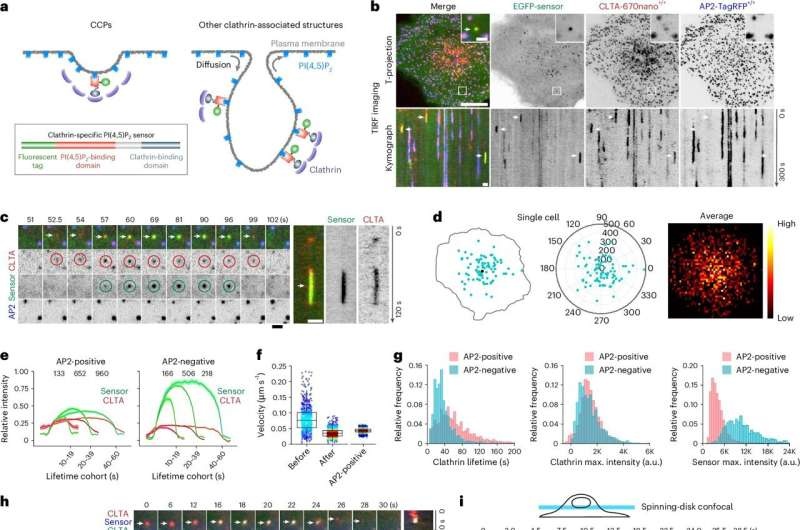Researchers have uncovered a novel endocytic recycling pathway that employs a unique ‘kiss-and-run’ membrane fusion process, challenging our understanding of how cells manage material uptake and retrieval.

Unveiling the ‘CARP’ Pathway
One such study, led by Dr. He Kangmin from Institute of Genetics and Developmental Biology, Chinese Academy of Sciences, discovered an ‘abridged version’ of the physiological endocytic recycling mechanism termed as clathrin-associated fast endosomal recycling pathway (CARP).
In contrast to the extensively characterized ‘fast’ and ‘slow’ tubulovesicular recycling pathways, this form of recycling involves a unique molecular machinery for forming recycling carriers and executing an unforeseen ‘kiss-and-run’ membrane fusion.
The researchers found a population of these clathrin-associated structures making brief visits to the plasma membrane using advanced imaging methodologies. Isolation of these structures, referred to as intracellular clathrin/AP1-associated carriers (CCVs), and analysis of their traffic indicated that they performed a partial fusion with the plasma membrane prior to retrieving and discharging into the cell.
Monitoring the CARP Mechanism
The research group further characterized the CARP pathway via a TIRF microscopy-based imaging screen for molecules associated with clathrin-labeled recycling carriers and identified several factors that affect carrier formation, delivery, fusion with the PM, and/or retrieval.
The carriers are generated from a unique subdomain of early endosomes and do not contain retrograde retrieval complexes. It was demonstrated by measuring endocytic recycling of signaling receptors such as the β2 adrenergic receptor and epidermal growth factor receptor, that CARP can mediate the rapid return (fast-recycling) of these critical cellular constituents back to the plasma membrane.
The identification of this pathway raises new issues and perplexity in the current opposition between, on one side, the tubulovesicular fast or slow endocytic recycling pathways. We postulate that the CARP pathway offers a newly discovered and surprising alternative to autophagic material degradation, which renders an exciting research field with potential therapeutic applications.
Conclusion
The discovery of the clathrin-associated recycling pathway (CAR: see [13] and references therein) has expanded our knowledge about endocytic recycling in eukaryotic cells. This unusual membrane fusion event, dubbed a ‘kiss-and-run,’ represents not only a distinctive way of understanding how cells take up and recycle different substances. The knowledge gained in the course of this study could have broad applications in fields as diverse as cell biology, drug delivery, and tissue engineering.
